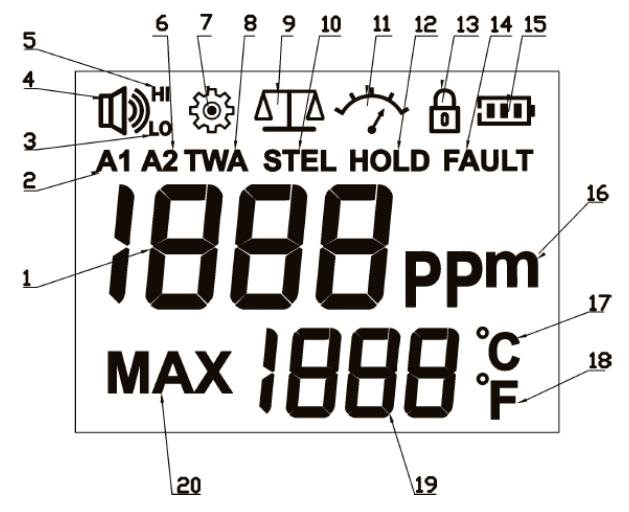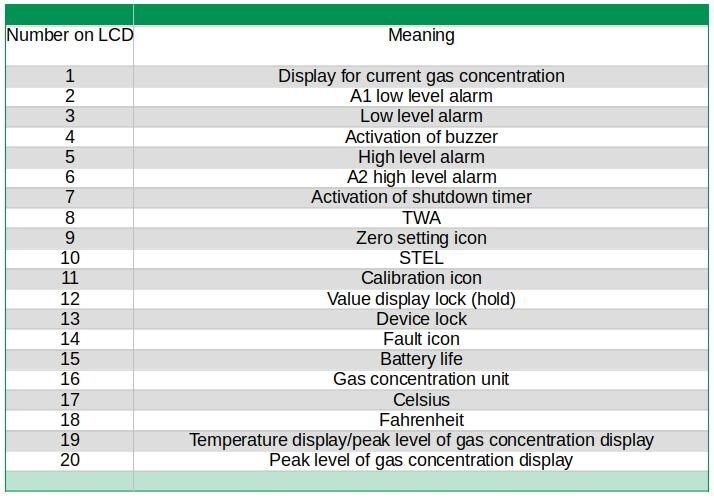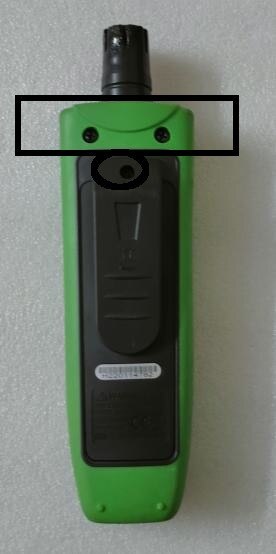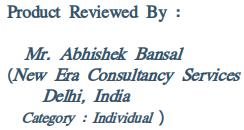RoadTest: Enroll to Review the Multicomp Pro MP780892 Air Quality Meter
Author: Unknown
Creation date:
Evaluation Type: Test Equipment
Did you receive all parts the manufacturer stated would be included in the package?: True
What other parts do you consider comparable to this product?: Molex KIT-INS-CO-03 ,Molex INS-CO-03,EXTECH INSTRUMENTS CO260,MOLEX KIT-INS-CO-02
What were the biggest problems encountered?: 1) Some readings were stubborn, unless the meter is placed more nearer, the recorded reading becomes lesser or zero. For example, I burnt 0.3cm with soaked lubricant, but it recorded zero unless brought too near or above in the air. Bringing too near the fire will damage the nozzle.
Detailed Review:
Thanks for choosing me to review and evaluate the portable air quality meter, Carbon Monoxide detector/meter, MP780892 by MultiComp PRO. The title of my review is same as the submitted title of the proposal.
I have divided this review in 7 parts (mentioned in Table of Contents) and videos in 6 parts.
To make one understand about this product/CO detector/testing instrument, I have divided video recording's in 6 parts, which are summarised as
Following are the unboxing pictures :
(a) All items together (in packing)

(b) Invoice

(c) Meter with batteries and inside manual and Silica gel packet



(d) Type of Batteries Provided : Four AAA (or 24A LR03) 1.5 V, 12 Amperes


Video : Due to been not well, I cannot record voice as needed in this road test and I m sorry for this but rest all I have reviewed properly according to me (except voice recording video).
I have taken number of recordings under different conditions. Now, what experiment was performed, it is mentioned in the video description, which are uploaded on youtube. 24 Recording Videos will look here cumbersome and bulky and would occupy lot space on this review page. I m mentioning the summary and conclusion of it here (one may not go on youtube, unless one doubts the measurement).
I had planned to take more readings like from ill patients with lung disease/infections, smoking people, some industrial locations but unfortunately I could not record them as I failed to get approval because of these reasons :
I have concluded that 'one recorded reading' is not applicable universally and hence the measurement recordings must not be taken directly as conclusion. The same object do not give the same reading under different environmental conditions, and the other vendor or product made of different material do not give the same reading as the other. Following observations were found during more readings than the uploaded 24 recordings
(i) MatchStick Experiments
(ii) Cloth Experiments
(iii) Short-Circuit Experiments
But in general, when only an insulated wire or alone insulation was burnt (not shown here), it only shows rubber burning smell and may be release of other gases but meter read it as 0 ppm (always) and so, not carbon monoxide. But, the common short-circuits which are heard in news, I have not taken measurement at those places.
(iv) Cotton Experiments
(v) CNG BS IV Vehicle Emission Experiments
A.) Following three readings are at the same time, just minutes apart. The reading is from 4 stroke, CNG, 998 cc, 4 wheeler. The vehicle in idle neutral, no acceleration. The environment condition was raining and the vehicle condition was it was not used for 15-20 days and was parked.
B.) When the same vehicle used regularly and when it was subjected to measure, it showed 0 ppm and the environment condition was clean, sunny.
(vi) Petrol 2 wheeler
(vii) Candle Burning and Wax Experiments
(viii) Paper Experiments
(ix) Misc Experiments
The use of this CO detector/testing instrument, The MultiComp PRO Air Quality Meter, MP780892 do not end with this review. The CO detector/instrument is a necessary test tool in many environmental scenarios.
I have written one research paper which is basically the summarization of this article only and is incomplete (the funding of this CO detector/testing instrument/testing equipment has been acknowledged in this Research paper).
I have revealed one of the instigation factors to do research with ill patients or smokers.
The CO detector/testing instrument has certainly proved to be useful in refining my personal scientific/clinical models, which hopefully would be submitted in the coming months and I will even mention the use of this meter explaining how it strengthens justification. One may track on my profile or I will even mention them in the comment box (hopefully this do not make me accuse of self publicity).
Following are pros and cons (not mentioned according to priority)
Pros
1. CO Range
Though, the company's manual says CO range is 0 ppm to 1000 ppm with a resolution of 1 ppm and accuracy of ± 5% ( or 5 ppm), which makes the maximum range to 1050 ppm but as demonstrated in the videos, the MultiComp PRO MP780892 easily measures upto 1640 ppm.
2. Warm-up & Response time
The response time of the reading, which technically is 90 % of the reading is within 1 second, which is too good and indicates that the warm-up time is within approx 0.70 seconds.
Note : The warm-up time of 0.70 seconds (approx) is not indicated by the manufacturer but calculated by me. The manual only mentions T90 < 60s.
3. Adjustable Alarm
If one goes for the settings, the alarm of MultiComp PRO MP780892 can be quite complicated for novices, otherwise it is simple. The alarm can be changed with long press, short press and there are 2 setting points - A1 and A2.
3.1 Setting 1, A1
This is the low alarm point and the default setting is 35 ppm. This can be adjusted manually if one wants to 20 ppm or lower. One can question when the ASHRAE Standard 62-1989 for living areas is 9 ppm, why 35 ppm is chosen, not 30 ppm.The MultiComp PRO MP780892 has not chosen this 35 ppm as the low alarm point arbitrarily. This 35 ppm is the time-weighted average (TWA) and is the permissible limit for carbon monoxide in working environment.
When the meter reads CO level at this default setting A1 or the user adjusted A1 setting, the buzzer sounds and the light will flash at the frequency of 1 Hz.
If one do not want to hear buzzer sound, the user can press [MUTE] button to stop the audible alarm. The buzzer will stop working temporarily and the icon in the upper left corner of LCD will disappear, for 3 minutes only but after 3 minutes the buzzer will again sound and icon will again flash at the frequency of 1 Hz. This is again a good setting in case user forget and neglects CO presence which can harm him/her or by chance the child plays and the setting is OFF.
Caution : Wrong ppm setting can lead to potential danger.
3.2 Setting 2, A2
The setting 2 is A2 and is set at 200 ppm by default. One can set this to 500 ppm or 50ppm or 800ppm. One can again question, when the carbon monoxide reading of 200 ppm causes carbon monoxide poisoning with known symptoms of mild headache, fatigue, nausea and dizziness within 2-3 hours, why not 200 ppm is set. Again this 200 ppm value, the MultiComp PRO MP780892 has not chosen arbitrarily,it is TWA Short-term exposure limit (STEL) value.
When the meter reads CO level at this default setting A2 or the user adjusted A2 setting, the buzzer sounds and the light will flash at the frequency of 2 Hz.
If one do not want to hear buzzer sound, the user can press [MUTE] button to stop the audible alarm. The buzzer will stop working temporarily and the icon in the upper left corner of LCD will disappear, for 3 minutes only but after 3 minutes the buzzer will again sound and icon will again flash at the frequency of 2 Hz. This is again a good setting if by chance the child plays and the setting is OFF or in case user forgets and neglects high CO presence which can hospitalise or cause death or cause other symptoms.
Caution : Wrong ppm setting can lead to potential danger.
3.3 Video : Alarm Setting
You don't have permission to edit metadata of this video.
4. Back-light Control
The manual says if the light is insufficient in the environment, the backlight can be used to read reading. The backlight can be turned on or off by pressing [BL] button.
I have made two videos on this to see backlight [BL] ON/OFF effect.
4.1 Video Backlight1
Video backlight1 (5466.bl_1.mp4) demostrates backlight [BL] when room light or ambient light available. Initially, no backlight [BL] used and one can read the display but 0:05 of this recording, the backlight is ON and the backlight is not eye-irritating in the ambient light.
4.2 Video Backlight2
Video Backlight2 (5238.night.mp4) demostrates backlight [BL] when NO room light or NO ambient light available. One can clearly see the backlight effect in dark night and it is amazing as one can clearly read the reading. FOllowing are the video phases
5. Sensor Temperature

10. Sensor Self-Test
The actual sensor calibration is complicated which can be done by professional trained with handling carbon monoxide gas. But this instrument/product allows user to perform its self-test, which can be done regularly once a month or once every 24 hours but not frequently.
For this, one should press only [SET] button and the sensor performs its self-test in 3 minutes. If the sensor is broken or wire breakage or short circuit, FAULT icon will flash in the upper right corner of LCD.
If the case of fault detection of the sensor, FAULT icon flashes during normal gas detection. In such case, one will have to calibrate the sensor and contact company professional.
One need not fear if sensor has low life-span, the faults like sensor broken or wire breakage or short circuit can be caused by meter falling or too high temperatures but as such the sensor has life expectancy of 5 years.
11. Product Working Principle
This CO detector/testing instrument uses Electro-chemical CO gas sensor cell and takes reading based on the sampling method of diffusion and dispersion.
The carbon monoxide poisoning level as given in the manual





16. Export Control Classification Number (ECCN)
Cons
1. The nozzle covering though of plastic is of nominal quality as even when the intentional burning of the cloth with gearoil is done, it doesn't get melted fully but minor damages can be seen.
Some readings were stubborn, unless the meter is placed more nearer, the recorded reading becomes lesser or zero. For example, I burnt 0.3cm with soaked lubricant, but it recorded zero unless brought too near or above in the air. Bringing too near the fire will damage the nozzle and in few cases it was necessary to bring it near otherwise reading cannot be recorded as it showed 0 ppm.
Caution : This doesn't mean one can take reading by putting in fire or take reading touching the fire. If this is done, plastic will melt fully damaging the sensor. In the videos, it might look it is in fire but there is negligible(very little) distance between fire and the meter, may be at times minor touch had happened.
Video : Damage of nozzle after 24 readings.
You don't have permission to edit metadata of this video.
2. High Fire or bigger fire cannot be tested easily due to risk of melting which may completely damage the electrochemical gas sensor.
3. Sensor Calibration
The sensor has to be calibrated but it is as such not a cons, any meter needs calibration after some time.
4. The manual states this - CO detector/testing instrument is not suitable to detect carbon monoxide concentration in the environment with frequently or drastically changed temperature and humidity.
5. Battery Placement Confusion
It is obvious that batteries would be put in the rear of the CO detector/testing instrument but there are three screws which creates confusion which to open. The manual does mention 'battery cover' and it may not be understood by novices.

After unscrewing the circled one

Moreover, improperly placing back the cover can baffle few or it can even break the plastic edge.

First insert this edge

6. The sensor calibration and alarm settings are quite complicated.
7. To enter into zero and sensor calibration, Keys- Set + Power button, need to be pressed.The manual mentions - The calibration procedure requires usage of carbon monoxide (poisonous gas), so it should be done by professionals.
8. The sensor self-test cannot detect CO sensitivity loss caused by lack of gas diffusion when dust or water droplets cover the pin holes for gas diffusion. This is related to sensor-self test not calibration and any other sensor will have the same problem only.
9. The meter records in resolution of 1 ppm, it may be interesting to see in 0.1 ppm but this will definitely double or triple the price.
10. The meter records in ppm, that is, parts per million; it would be interesting to see parts per billion or parts per trillion or parts per zillion and so on.
Precautions/Safety Warnings
The manual mentions some precautions :
1. Do not allow the pin holes of the sensor blocked by foreign matter or dust. If the surface of the meter is dirty and it requires cleaning, then clean it with wet soft cloth or sponge.
Following prices are without tax and without shipping (and/or custom charges).
The currency conversion from INR to USD is taken from the website. The amount mentioned in Euro,€ is obtained after INR currency conversion to Euros, €.
The product Multicomp Pro MP780892 has price tag of Indian Rupees INR Rs.6,839.69, British pound sterling GBP of £40.24, Chinese Yuan CNY 692.87, Euros € 74.275696 and US Dollars $ 62.00. There are four competitive and comparable products, whose pricing and pros cons are mentioned below :
1. Molex KIT-INS-CO-03
This meter has price tag of Indian Rupees INR Rs.23,083.59, British pound sterling GBP of £180.54, Euros € 250.66345 and US Dollars $218.99. The currency conversion from INR to USD seems to be incorrect but this is listed on the website.
This is comparable but not with respect to the pricing.
2. Molex INS-CO-03
This meter has price tag of Indian Rupees INR Rs.20,504.42, British pound sterling GBP of £150.32, Euros € 222.68122 and US Dollars $218.99. The currency conversion from INR to USD seems to be incorrect but this is listed on the website.
This again is comparable but not with respect to the pricing.
3. EXTECH INSTRUMENTS CO260
This meter has price tag of Indian Rupees INR Rs.70,735.99, British pound sterling GBP of £547.23, Euros € 768.20396 and US Dollars $908.11.
This again is comparable but not with respect to the pricing.
4. MOLEX KIT-INS-CO-02
This meter has price tag of Indian Rupees INR Rs.26,952.35, British pound sterling GBP of £169.91, Euros € 292.58254 and US Dollars $255.69.
This again is comparable but not with respect to the pricing.
Of all the comparable products, the MultiComp PRO MP780892 is a clear winner as it is economical, affordable and measures ppm upto hazardous level which can cause illness.
The CO detector/testing instrument can have following add-ons, which will obviously increase product cost and so the following suggested add-ons will form 2-4 variants
The product is affordable, economical as compared to only four other market competitors.
The test meter/CO detector/testing instrument performed more than expectations as the maximum level of rated measurement is 1000 ppm but it easily measured upto 1640 ppm, so it looks the limit is 1640 ppm but whether the shown products measure more than 1640 ppm is not conclusive.
